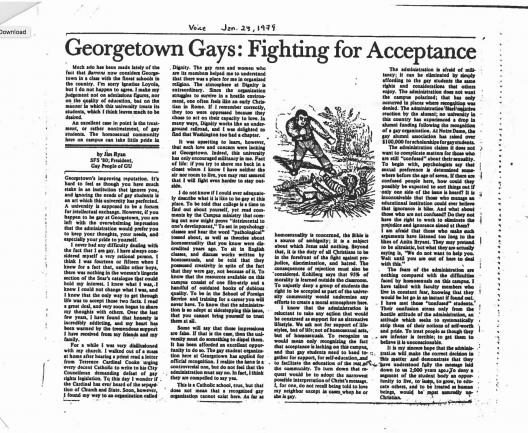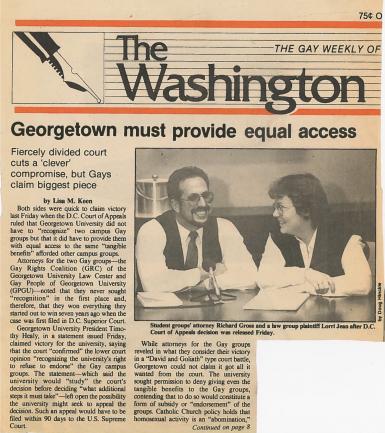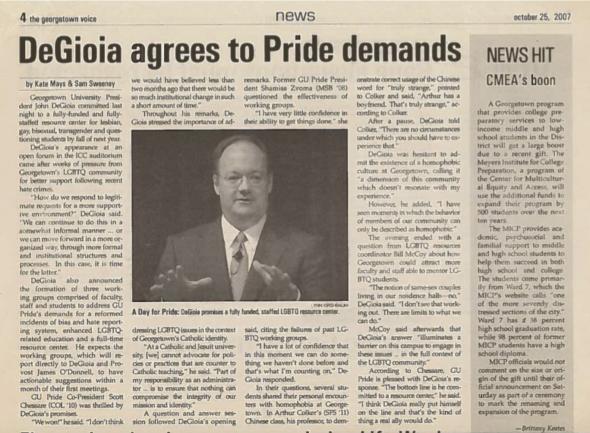History of the Center
LGBTQ Histories at Georgetown
To acknowledge and record the work done by LGBTQ students from the 1970s to the founding of the LGBTQ Resource Center, the Center has created a blog, “LGBTQ Histories at Georgetown.” Visit the blog to access a timeline of events, archives, and interviews with a group of staff, faculty, and alumni who had been present and involved on campus during the lawsuit or during the Out for Change campaign.
Founding of the Center
In the Fall of 2007, students at Georgetown organized the Out for Change campaign. The campaign led to the formation of the Working Groups, whose reports can be found here. Sivagami “Shiva” Subbaraman was hired as the first Director of the Center in July, 2008 and the Center formally opened its doors in Aug 2008.
It seems necessary to mark President DeGioia’s historic town hall meeting in response to student demands, and the establishment of a fully-funded and staffed LGBTQ Resource Center on the Hilltop. It had been a long journey to that moment, and like all such journeys, many roads led to that moment: roads paved with dreams—dreams lost; dreams won; dreams unraveled; dreams re-woven. The discernment and dialogue have continued and served as the Center’s touchstone since we opened our doors on August 26, 2008. Central to our vision is the belief that LGBTQ identities and communities are best understood in the context of all other identities and communities, and we draw upon our Jesuit values and understandings as we seek to model a unique way to build a Center that is truly integrative and integrated in its work.
Much of the Center’s work has been guided by the recommendations that emerged from the three Working Group reports on Resources, Education & Outreach, and Reporting and these have served as a road map in our “ways of proceeding.” In these first 14 months more than 80% of the chief recommendations have either been implemented in full, or the infrastructure for them has been established. As we move forward in our second year, we continue to build depth—weaving richer tapestries and adding layers to our understanding and modeling on how to do LGBTQ work thoughtfully in the wider contexts of diversity, inclusion, and faith in higher education.







